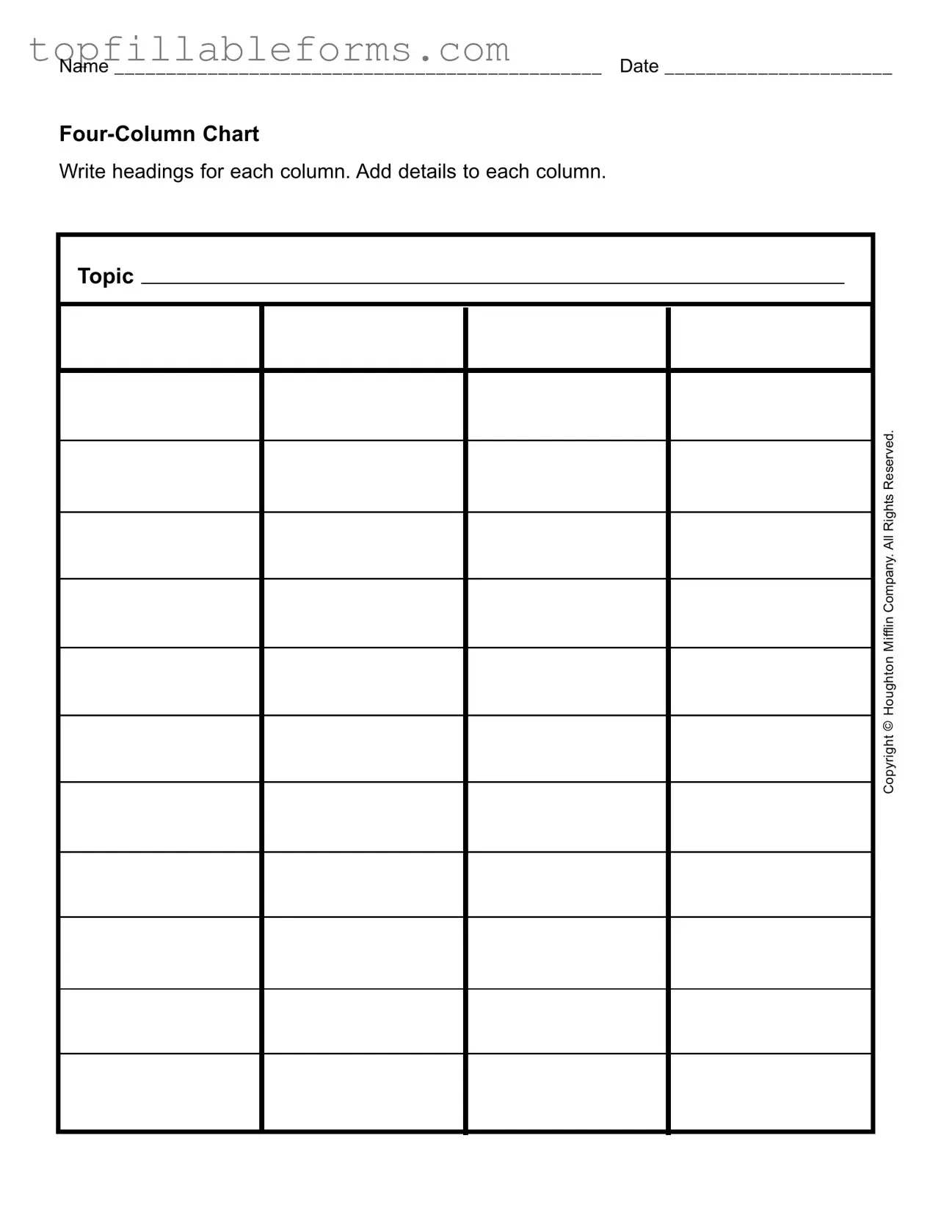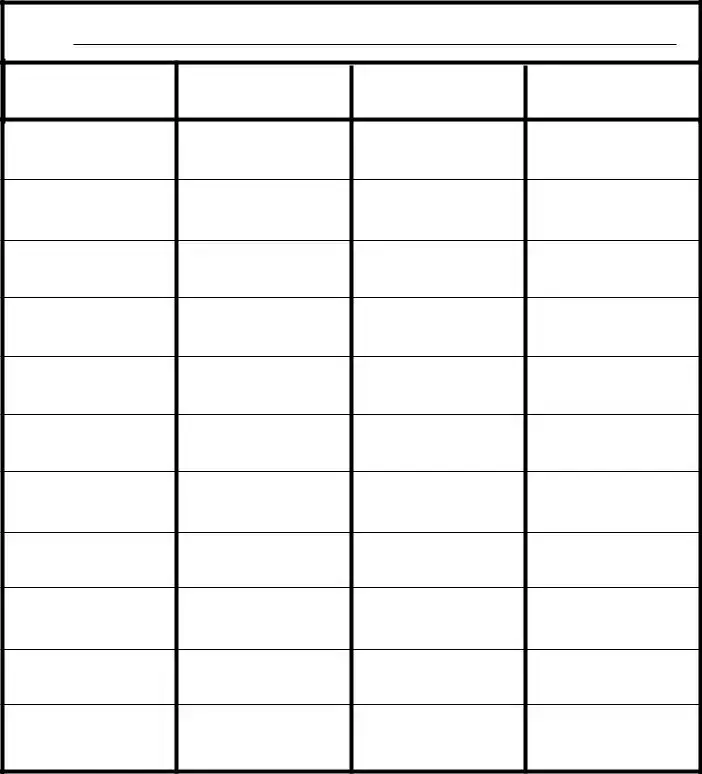Printable Four Column Chart Form in PDF
The Four Column Chart form is a structured tool used to organize information into four distinct categories. This format allows users to clearly define topics and add relevant details under each heading. It is especially useful for summarizing complex information in a concise manner.
Open Four Column Chart Editor Here

